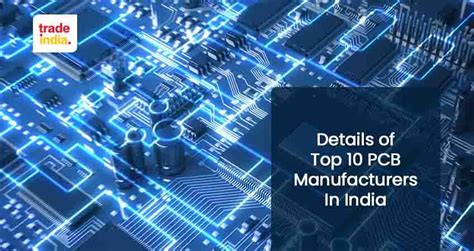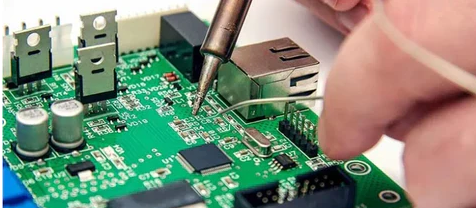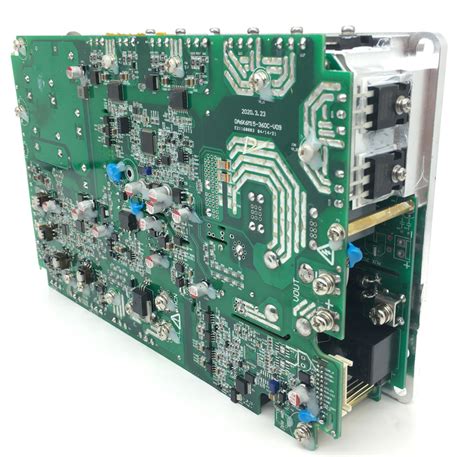s Leading PCB Manufacturers Worldwide
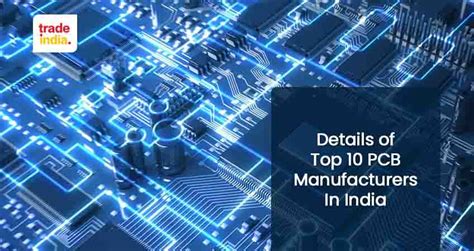
Key Takeaways
When evaluating PCB manufacturing companies, you’ll notice Asia dominates the global market, housing over 70% of production capacity. Leading firms leverage economies of scale to optimize PCB manufacturing cost, making them critical partners for high-volume projects. However, innovation isn’t limited to cost efficiency—PCB manufacturing leaders are also advancing technologies like high-density interconnect (HDI) and flexible circuits.
Here’s a quick comparison of regional strengths:
| Region | Key Capabilities | Cost Efficiency | Specializations |
|---|---|---|---|
| Asia | High-volume production | ★★★★★ | Consumer electronics, automotive |
| North America | Prototyping, aerospace-grade PCBs | ★★★☆☆ | Defense, medical devices |
| Europe | Sustainable practices, precision | ★★★★☆ | Industrial automation, IoT |
Your choice of PCB manufacturing business partners should align with priorities: cost, technical expertise, or speed-to-market. For example, Asian suppliers excel in balancing PCB manufacturing cost with rapid scalability, while North American firms prioritize reliability for mission-critical applications. Emerging trends like automation and eco-friendly materials are reshaping workflows—factors you’ll want to monitor when planning long-term partnerships.
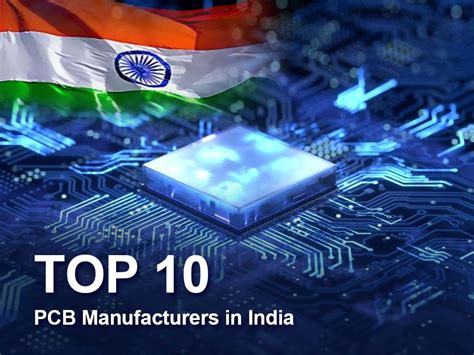
Global PCB Market Landscape Overview
The PCB manufacturing sector forms the backbone of modern electronics, with its global market value exceeding $72 billion in 2023. As demand grows for smaller, faster, and more energy-efficient devices, PCB manufacturing companies are navigating shifting regional dynamics and technological demands. Asia currently dominates production, accounting for over 80% of global output, driven by established supply chains and competitive PCB manufacturing cost structures. However, North America and Europe are gaining traction in high-reliability applications like aerospace and medical devices.
Raw material prices and geopolitical factors increasingly influence PCB manufacturing business strategies, pushing companies to adopt automation and sustainable practices. For example, advanced factories now use AI-driven quality control systems to reduce waste by up to 30%.
"To stay competitive, prioritize suppliers with ISO-certified facilities—this ensures compliance with international standards while managing production expenses," advises a recent market analysis.
While regional disparities in labor costs persist, innovations like embedded component technology are reshaping cost equations industry-wide. As you evaluate market opportunities, consider how emerging trends like 5G infrastructure and electric vehicle adoption will further strain existing production capacities—a challenge for both established players and new entrants.
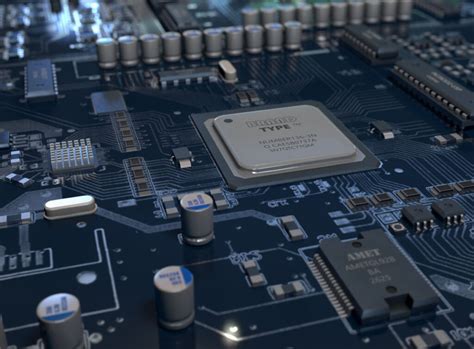
Top PCB Manufacturers Ranked for 2023
When navigating the competitive landscape of PCB manufacturing, you’ll find that 2023’s rankings prioritize companies balancing scale, innovation, and cost efficiency. Leading PCB manufacturing companies like TTM Technologies and Zhen Ding Technology dominate due to their advanced fabrication capabilities and global supply chain networks. These firms excel in high-volume production while maintaining precision for complex designs—critical factors influencing PCB manufacturing cost and client ROI.
A key differentiator this year is how top players integrate AI-driven quality control systems, reducing defects by up to 30% compared to industry averages. For instance, Unimicron leverages machine learning to optimize material usage, directly addressing rising copper and substrate expenses. Meanwhile, Samsung Electro-Mechanics leads in high-density interconnect (HDI) and flexible PCB innovations, catering to 5G and wearable tech demands.
You’ll notice that sustainability practices now heavily influence rankings. Companies like AT&S and Ibiden have cut carbon footprints by 25% through renewable energy adoption, aligning with stricter environmental regulations—a growing priority for clients evaluating PCB manufacturing business partnerships.
Regional specialization also plays a role: Asian manufacturers dominate in cost-competitive mass production, while North American and European firms focus on low-volume, high-reliability sectors like aerospace. This duality ensures diverse options depending on your project’s technical requirements and budget constraints.
Ultimately, 2023’s top-ranked manufacturers prove that balancing PCB manufacturing cost with cutting-edge technology and ethical practices remains the industry’s winning formula.
Innovation Leaders in PCB Technology Trends
When evaluating PCB manufacturing advancements, you’ll notice that innovation leaders prioritize automation and AI-driven prototyping to streamline production. These companies integrate advanced materials like high-frequency substrates and ultra-thin copper layers, reducing PCB manufacturing cost while enhancing performance. For instance, some PCB manufacturing companies now deploy machine learning algorithms to predict circuit failures during design phases, minimizing waste and accelerating time-to-market.
Another trend reshaping the industry is the adoption of additive manufacturing for flexible PCBs, enabling lighter and more durable electronics—critical for aerospace and wearable tech. Leaders in this space also focus on sustainability, using recyclable substrates and energy-efficient processes to align with global ESG standards. By optimizing PCB manufacturing business models through IoT-enabled factories, these innovators achieve real-time quality monitoring, ensuring consistency across high-volume orders.
What sets these leaders apart is their commitment to R&D partnerships. Collaborations with semiconductor giants and academic institutions allow them to pioneer technologies like embedded passive components or 3D-printed circuitry. These breakthroughs not only address evolving market demands but also position PCB manufacturing companies as indispensable partners in the 5G and AI hardware ecosystems. If your operations rely on cutting-edge electronics, understanding these trends ensures you stay ahead in a hyper-competitive landscape.

North American PCB Industry Competitors
When evaluating PCB manufacturing landscapes, North America presents a unique ecosystem where established players balance technological expertise with regional market demands. While Asian competitors dominate global volume, agile North American PCB manufacturing companies like TTM Technologies and Sanmina Corporation excel in high-reliability sectors—think aerospace, defense, and medical devices—where precision often outweighs PCB manufacturing cost considerations.
You’ll notice these firms prioritize customization and rapid prototyping, catering to clients needing low-volume, high-complexity boards. This strategy differentiates them from mass-production-focused rivals, though it requires tighter control over supply chains and material sourcing. To stay competitive, many are investing in automation to trim PCB manufacturing business overheads while maintaining stringent quality standards.
However, challenges persist. Rising material prices and skilled labor shortages pressure margins, pushing some companies to hybrid models—outsourcing routine production while retaining high-value design services domestically. Meanwhile, startups like Sierra Circuits leverage AI-driven design tools to carve niches in high-speed digital and RF applications. For buyers, this means balancing regional expertise with global PCB manufacturing cost benchmarks remains critical when sourcing from North America’s evolving player field.

European PCB Suppliers Market Analysis
When evaluating PCB manufacturing ecosystems, Europe’s landscape stands out for its focus on precision engineering and niche applications. While Asian competitors dominate high-volume production, European PCB manufacturing companies excel in specialized sectors like automotive electronics, aerospace, and industrial automation. Countries such as Germany, Austria, and Italy host firms that prioritize low-volume, high-mix production models, aligning with regional demand for customized solutions.
A key differentiator lies in how European suppliers manage PCB manufacturing cost structures. Higher labor and regulatory expenses are offset by investments in automation, advanced materials, and sustainable practices—factors increasingly valued by clients prioritizing environmental compliance. For instance, many manufacturers now integrate circular economy principles, reducing waste in the PCB manufacturing business while maintaining ISO-certified quality standards.
However, challenges persist. Energy costs and supply chain disruptions have pressured margins, pushing firms to adopt hybrid strategies—combining local expertise with partnerships in lower-cost regions. This duality allows European players to balance time-to-market efficiency with the technical rigor their markets demand. As you assess global suppliers, consider how Europe’s emphasis on innovation and regulatory alignment could complement your needs for reliability over pure scale.

PCB Manufacturing Capabilities Comparison Guide
When comparing PCB manufacturing capabilities, you’ll want to assess technical specifications like layer counts, material options, and tolerance levels across leading PCB manufacturing companies. Modern providers differentiate themselves through advanced technologies such as high-density interconnect (HDI) designs or flexible PCBs, which cater to industries like aerospace or medical devices. For cost-sensitive projects, evaluating PCB manufacturing cost structures—including bulk pricing, prototyping fees, and material sourcing—becomes critical.
Top-tier PCB manufacturing business operators often hold certifications like ISO 9001 or IPC Class 3, ensuring reliability for mission-critical applications. However, regional variations exist: Asian manufacturers typically excel in high-volume production, while North American and European suppliers prioritize rapid prototyping and specialized materials. You’ll also notice differences in lead times—some global players offer 24-hour turnaround for urgent orders, whereas others focus on scalability for long-term partnerships.
To optimize your selection, cross-reference design support services (like DFM analysis) and testing protocols (automated optical inspection, thermal testing) against your project’s complexity. While PCB manufacturing cost remains a critical factor, balancing price with technical expertise ensures your final product meets both performance benchmarks and budget constraints. Understanding these variables helps align your PCB manufacturing business needs with providers whose capabilities directly address your industry’s demands.
Emerging Trends Shaping PCB Industry Growth
As you explore the evolving landscape of PCB manufacturing, three key trends stand out: sustainability, automation, and miniaturization. Rising PCB manufacturing costs—driven by material shortages and energy price fluctuations—are pushing companies to adopt eco-friendly practices, such as recyclable substrates and lead-free processes. These shifts not only reduce environmental impact but also align with stricter global regulations, making them critical for long-term competitiveness.
Another shift involves automation in PCB manufacturing business operations. Advanced robotics and AI-driven quality control systems are minimizing human error while boosting production speeds. For instance, smart factories now leverage machine learning to predict equipment failures, slashing downtime by up to 30%. This technological leap helps PCB manufacturing companies maintain margins despite volatile demand.
Meanwhile, the push for miniaturization continues to dominate R&D efforts. With industries like IoT and wearables requiring ultra-thin, high-density interconnect (HDI) boards, manufacturers are investing in laser direct imaging and additive printing techniques. Such innovations enable tighter tolerances, directly addressing the need for smaller, more efficient designs without compromising PCB manufacturing cost efficiency.
Finally, supply chain diversification is reshaping strategies. Geopolitical tensions have prompted firms to regionalize production hubs, balancing risk and responsiveness. By integrating these trends, businesses can future-proof their operations while capitalizing on emerging opportunities in aerospace, automotive electrification, and 5G infrastructure.
To stay ahead, prioritize partnerships with PCB manufacturing companies that blend agility with cutting-edge capabilities—your ability to adapt will define success in this dynamic sector.
Conclusion
When evaluating PCB manufacturing partners, you’ll find that the industry’s leaders balance technical expertise with cost optimization to stay competitive. The global landscape reveals that PCB manufacturing companies in Asia dominate production scale, while North American and European suppliers excel in niche, high-reliability applications. As PCB manufacturing costs fluctuate with material availability and geopolitical factors, businesses must prioritize agility—partnering with firms that integrate advanced automation or sustainable practices can future-proof your supply chain.
Your choice ultimately hinges on aligning a manufacturer’s capabilities with your PCB manufacturing business goals. Whether prioritizing rapid prototyping, ultra-high-density designs, or volume scalability, the top-tier players highlighted earlier demonstrate how innovation intersects with operational efficiency. By staying informed about regional strengths and emerging technologies, you’re better positioned to navigate this dynamic sector and secure partnerships that drive long-term success.
Frequently Asked Questions
How do you choose between top PCB manufacturing companies?
When evaluating PCB manufacturing partners, consider their certifications (ISO, UL), material expertise, and turnaround times. Leading PCB manufacturing companies differentiate themselves through advanced HDI technology and prototyping capabilities.
What factors influence PCB manufacturing cost?
Key drivers include board complexity, layer count, and material selection. High-volume orders typically reduce PCB manufacturing cost through volume discounts, while tight tolerance requirements may increase expenses. Always request detailed breakdowns from suppliers.
Can small businesses compete in PCB manufacturing?
Yes, niche-focused PCB manufacturing business operations thrive by specializing in quick-turn prototypes or low-volume/high-mix production. Many partners offer scalable solutions that align with growing demand, though supply chain management remains critical.
How does regional location affect PCB supplier selection?
Asian hubs dominate high-volume PCB manufacturing, while North American/European suppliers excel in military-grade and aerospace-compliant production. Balance logistical costs against quality control needs—some companies mitigate risks through dual-sourcing strategies.
What certifications matter most in PCB manufacturing?
Prioritize ISO 9001 for quality systems and IPC-A-600 for workmanship standards. For specialized applications, look for AS9100D (aerospace) or IATF 16949 (automotive). Reputable PCB manufacturing companies openly share compliance documentation.
Ready to Streamline Your PCB Production?
For tailored solutions that balance PCB manufacturing cost with cutting-edge capabilities, please click here. Explore how industry leaders optimize design-for-manufacturing processes and supply chain resilience for your projects.

